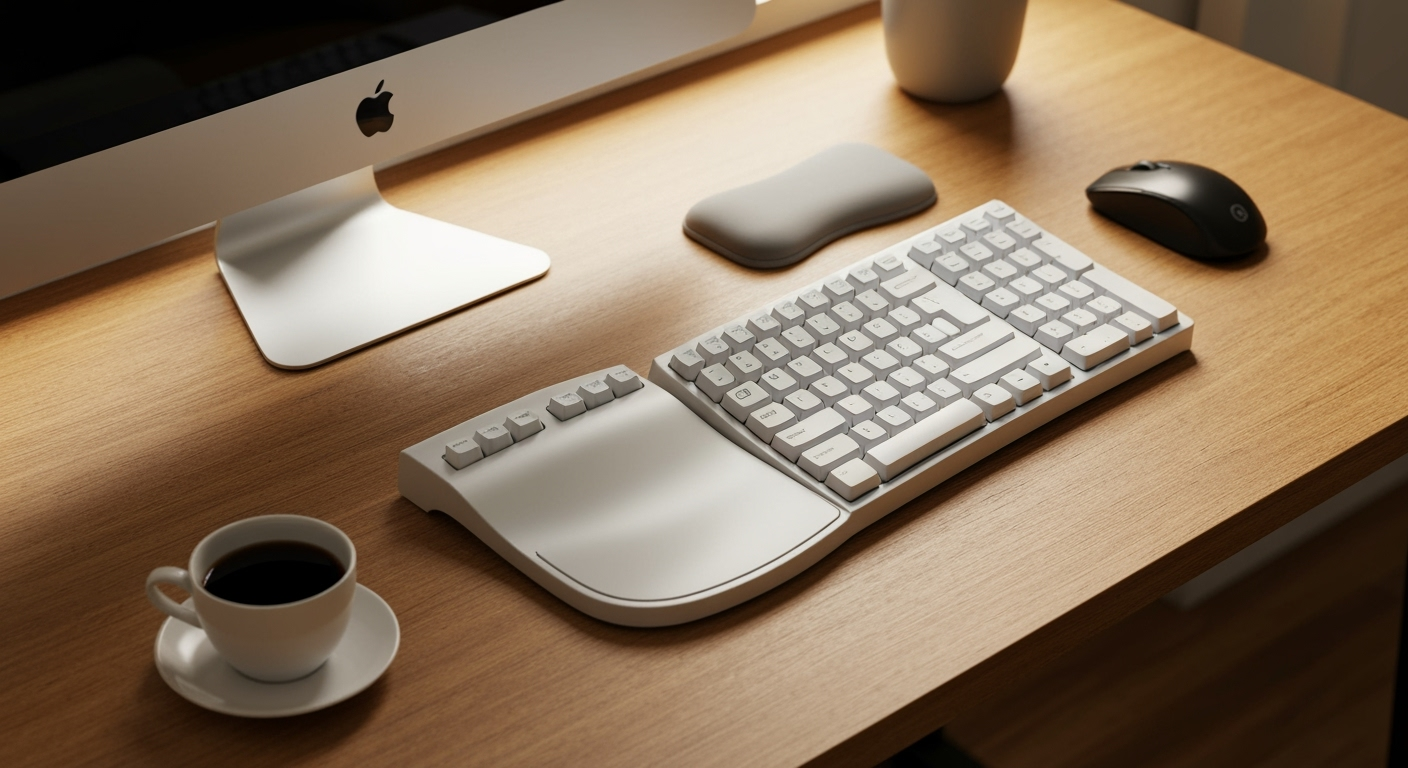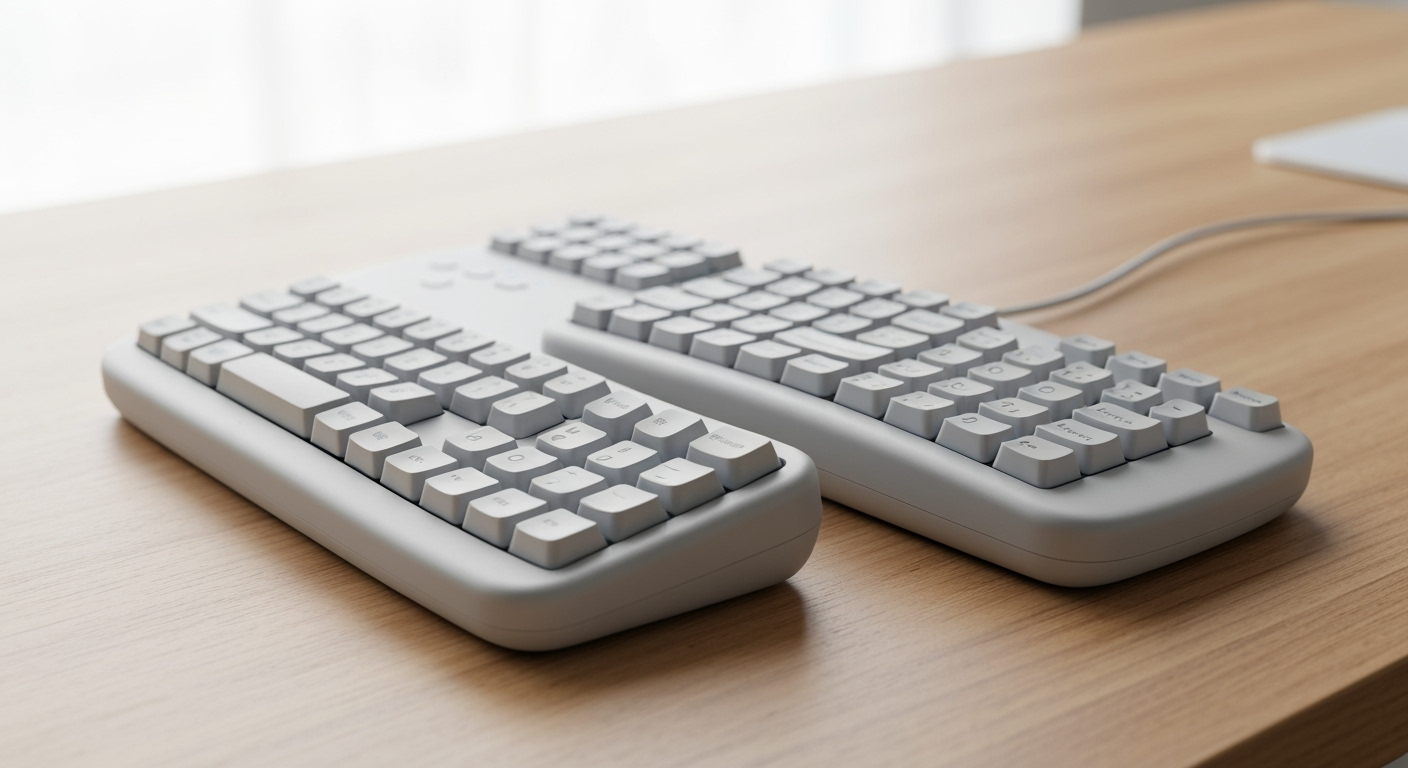
Tired of wrist pain and discomfort during long workdays? An ergonomic keyboard might be the solution you’ve been searching for. These keyboards are designed to promote a more natural posture, reducing strain on your wrists, hands, and arms. But with so many options available, finding the perfect fit can be overwhelming. This roundup reviews several popular ergonomic keyboards, highlighting their key features, pros, and cons to help you make the right choice.
What is an Ergonomic Keyboard?
Ergonomic keyboards differ from traditional keyboards in their design, aiming to minimize strain and promote a more natural typing posture. Common ergonomic features include:
- Split Design: Separates the keyboard into two halves, allowing your wrists to remain straight.
- Curved or Contoured Layout: Positions keys at different angles to reduce wrist pronation.
- Integrated Wrist Rests: Provide support and cushioning for your wrists.
- Vertical Key Arrangement: Reduces ulnar deviation, a common cause of wrist pain.
Featured Keyboards
Microsoft Sculpt Ergonomic Keyboard

The Microsoft Sculpt is a popular choice for its split design, curved layout, and comfortable wrist rest. It promotes a natural typing posture and reduces wrist strain. The separate number pad provides flexibility, allowing you to position it wherever is most convenient. However, some users may find the function keys small and difficult to use.
- Pros: Split design, curved layout, comfortable wrist rest, wireless connectivity.
- Cons: Small function keys, requires batteries.
Kinesis Freestyle Edge RGB
The Kinesis Freestyle Edge RGB is a split mechanical keyboard designed for gamers and programmers. Its fully split design allows for complete separation of the two halves, promoting a natural shoulder and wrist position. It features programmable keys and RGB backlighting. However, it is a more expensive option, and the mechanical keys may be too loud for some users.
- Pros: Fully split design, programmable keys, mechanical keys, RGB backlighting.
- Cons: High price, loud keys, may require a learning curve.
Logitech Ergo K860
The Logitech Ergo K860 is a curved and sculpted keyboard designed for all-day comfort. It features a pillowed wrist rest and a split keyframe to reduce strain. It connects wirelessly via Bluetooth or USB receiver. Some users may find the integrated number pad less convenient than a separate one.
- Pros: Curved design, split keyframe, comfortable wrist rest, wireless connectivity.
- Cons: Integrated number pad, non-mechanical keys.
Matias Ergo Pro
The Matias Ergo Pro is a split mechanical keyboard with adjustable tenting and splay. This allows you to customize the keyboard to your preferred angle and wrist position. It features quiet mechanical keys and a built-in wrist rest. However, it is a wired keyboard and may be less portable than wireless options.
- Pros: Adjustable tenting and splay, quiet mechanical keys, built-in wrist rest.
- Cons: Wired connection, less portable.
Choosing the Right Keyboard
- Consider your budget: Ergonomic keyboards range in price from affordable to premium.
- Evaluate your needs: Identify the features that are most important to you, such as split design, mechanical keys, or wireless connectivity.
- Read reviews: See what other users have to say about the keyboard’s comfort, performance, and durability.
- Try before you buy: If possible, try out the keyboard in person to see if it feels comfortable.
Tips for Ergonomic Typing
Even with an ergonomic keyboard, it’s essential to practice good typing habits to prevent strain.
- Maintain a neutral wrist position: Keep your wrists straight and relaxed.
- Use a light touch: Avoid hitting the keys too hard.
- Take frequent breaks: Get up and stretch your hands and wrists regularly.
- Adjust your chair and monitor: Ensure your workstation is properly set up to promote good posture.
Conclusion
Investing in an ergonomic keyboard can significantly improve your comfort and reduce the risk of repetitive strain injuries. Consider your budget, needs, and preferences to find the perfect fit for your workspace. Remember to combine your new ergonomic setup with good typing habits for optimal results!